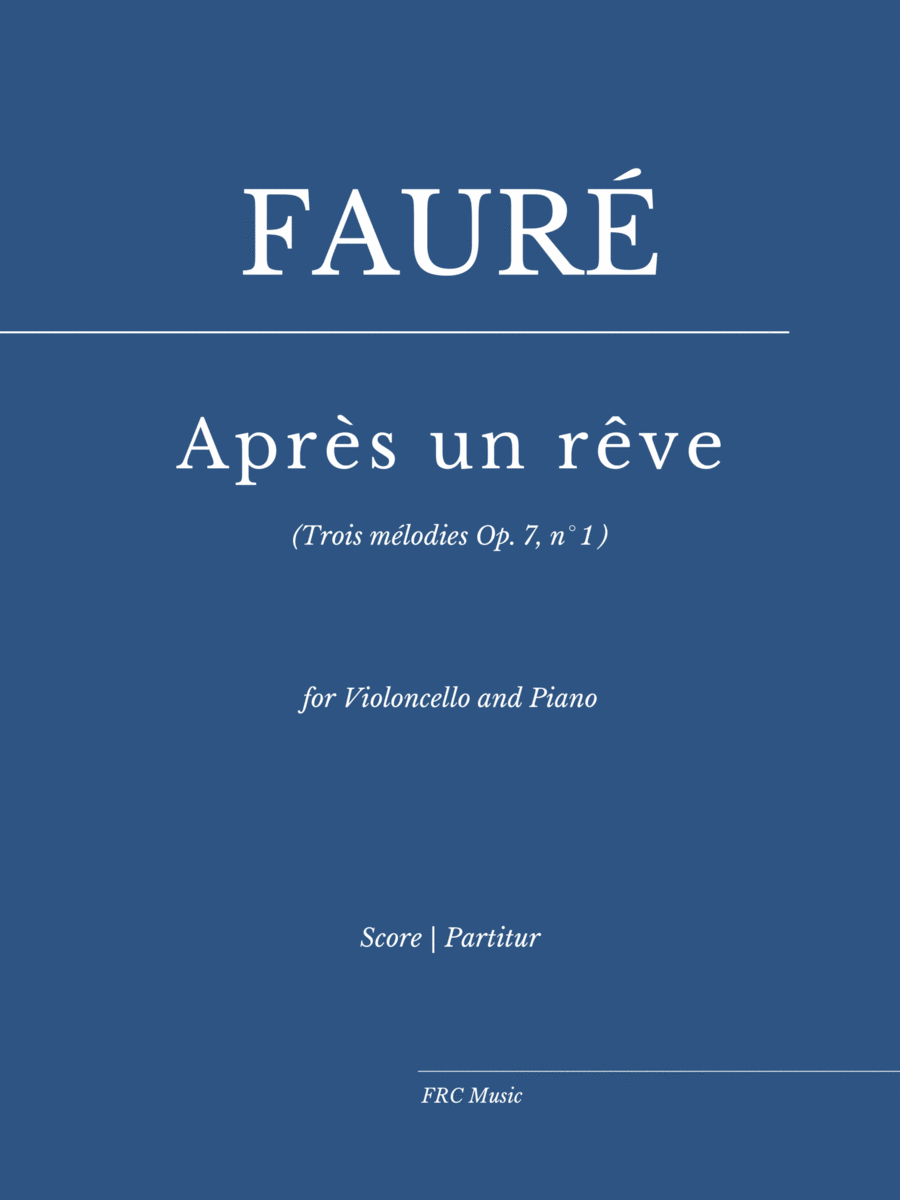Cello,Piano - Level 4 - Digital Download SKU: A0.1197751 By Gabriel Fauré, Yo Yo Ma and Kathryn Stott. By Gabriel Faure. Arranged by Flavio Regis Cunha. Classical,Contest,Festival,Film/TV,Instructional,Romantic Period. Score and part. 6 pages. Flavio Regis Cunha #796933. Published by Flavio Regis Cunha (A0.1197751). Après un rêve (Op. 7, No. 1) for cello and piano (as played by Yo Yo Ma and Kathryn StottTrois mélodies is a set of mélodies for solo voice and piano, by Gabriel Fauré. It consists of Après un rêve (Op. 7, No. 1), one of Faure's most popular vocal pieces, Hymne (Op. 7, No. 2), and Barcarolle (Op. 7, No. 3). The songs were written between 1870 and 1877, and published in 1878. They were not, however, originally conceived together as a set of three; the opus number 7 was imposed on them retrospectively in the 1890s, almost 20 years after their first publications.[citation needed]Après un rêveIn Après un rêve (After a dream), a dream of romantic flight with a lover, away from the earth and towards the light, is described. However, upon awakening, the dreamer longs to return to the mysterious night and the ecstatic falsehood of his dream. The text of the poem is an anonymous Italian poem freely adapted into French by Romain Bussine.Intermediate.Format: Concert, 9 x 12 inches.6 pages.
